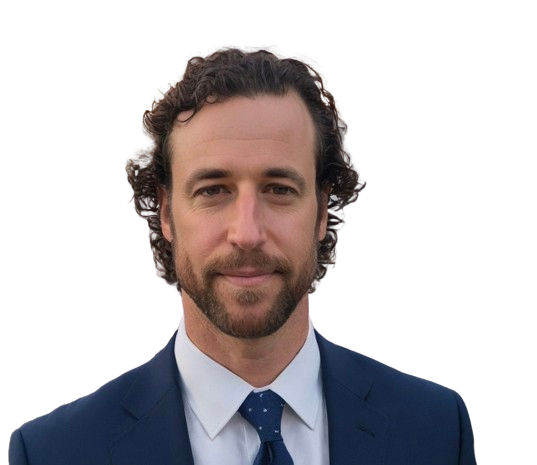
Why You Should Do Nothing
- Law Prep with Josh
- Why You Should Do Nothing
Why You Should Do Nothing

Drawing Wisdom from Jenny Odell’s “How to Do Nothing: Resisting the Attention Economy”
Odell explores the idea of ‘doing nothing’ as a form of resistance against the demands of a productivity-obsessed culture. She argues that the constant drive for efficiency and output can lead to burnout and a disconnection from the community and environment. By ‘doing nothing’, she refers not to idleness, but to engaging in activities that don’t produce measurable outcomes, like taking a walk in nature, birdwatching, or just sitting and observing.
This practice of non-productivity allows for reflection, reconnects individuals with their surroundings, and can lead to a more profound understanding of one’s place in the world. It’s a deliberate step away from the noise of societal expectations to find peace and presence in the immediate moment, which can be particularly beneficial in a demanding field like law, where the pace can be relentless and the work all-consuming.
Three Ways to Find Balance and Rejuvenation Through the Art of Pause
-
Understand Waiting
-
We all wait. Waiting is an intrinsic part of human experience.
In some South Asian cultures, waiting is often interwoven with religious and philosophical beliefs, where it can be seen as a test of patience or a spiritual journey. In contrast, in some Mediterranean societies, waiting might be perceived as a communal activity, filled with social interactions and storytelling, reflecting a more relational approach to time.
These examples contrast with Western industrialized views of waiting, often seen as a loss of productivity or a nuisance. So we flee waiting, more than ever. There seems to be an edge of anxiety to the way we hide from it. Why? I think its because waiting usually involves uncertainty: it is a state of not knowing what will come next or when it will be arrive. This loss of control can be unsettling. But once you understand the purposes waiting can serve, it can be an active, even liberating act rather than something we passively endure.
Samuel Beckett in his play “Waiting for Godot” paints a picture of waiting as an existential tableau. The plot revolves around two characters, Vladimir and Estragon, who wait endlessly for someone named Godot. Their waiting becomes a metaphor for human existence, emphasizing the uncertainty and lack of concrete meaning in life. – the search for meaning in a seemingly indifferent universe. The play’s lack of traditional plot progression, its repetitive dialogue, and the absence of a definitive conclusion all contribute to this metaphor. The characters’ persistent waiting, filled with uncertainty and devoid of clear purpose, mirrors the existential questioning of life’s meaning, illustrating the often absurd and unfulfilled nature of human pursuits. It can be interpreted optimistically as a celebration of human resilience and companionship in the face of an uncertain and seemingly meaningless world. The play encourages reflection on the nature of existence, the value of hope, and the significance of human relationships even in the absence of clear answers or resolutions.
Walter Benjamin, in “On the Concept of History“, challenges the linear progression of time, suggesting that true historical consciousness is not a passive wait but an active state of readiness for moments of revolutionary change. He argues that history is not a continuum of events but is punctuated by moments of disruption. These moments are opportunities for revolutionary change. Benjamin uses the metaphor of the “Angel of History,” which sees the past as a series of catastrophes, indicating a need to wait for the right moment to act against the status quo. He emphasizes that true historical consciousness involves recognizing these moments of potential change and acting upon them, turning waiting into an active, revolutionary stance. Benjamin’s perspective on waiting is not just enduring time but preparing for moments that disrupt historical continuity and open possibilities for transformation. Thus waiting becomes a period of critical observation and readiness for action. Benjamin’s perspective is particularly resonant because it empowers individuals to see themselves not just as subjects of history, but as agents capable of shaping it. This has a metaphorical connection to everyday acts like waiting for a bus or laundry. These routine waits can be seen as microcosms of larger existential waiting. They provide moments for reflection, decision-making, and anticipation of what’s next. While seemingly mundane, these periods of pause in our daily lives mirror the larger concept of waiting for significant historical moments. They offer opportunities for introspection and a reevaluation of our current state, similar to how Benjamin views waiting as a critical observance and preparation for action in the broader historical context.
Jacques Derrida’s “Specters of Marx” deals with the concept of waiting in the context of political and philosophical thought. Derrida discusses the idea of “hauntology,” where the past and future haunt the present, creating a state of waiting and anticipation for what is yet to come, especially in the realm of social justice. This perspective can be applied to everyday scenarios like waiting for a bus or laundry. For instance, while waiting for a bus, a person isn’t just idly standing; their present is shaped by past experiences (memories of previous waits, expectations based on past bus schedules) and future anticipations (plans for after the bus ride, concern about being late). Similarly, waiting for laundry involves past experiences (knowing the cycle duration) and future implications (the need for clean clothes for upcoming events). In the context of the 2024 US election, applying Derrida’s ‘hauntology’ involves linking emotions and anticipations to past political figures and events, and future aspirations and fears. For example, feelings of distrust or hope might be tied to the memories of previous administrations’ actions or inactions. Anticipation for change or improvement in specific policy areas, like healthcare or economy, might be influenced by past disappointments or successes. Similarly, fears regarding social issues, international relations, or economic stability are shaped by historical events and the legacies of former leaders.
Gabriel Marcel, in his works “Being and Having” and “Desire and Hope,” delves into the existential and philosophical aspects of human existence, including the concept of waiting. He sees waiting as an opportunity for personal growth and the development of desire and hope. Waiting is not merely enduring time but actively engaging with our deepest desires and hopes, making it a significant and meaningful experience. For example, consider someone waiting for news about a job application. This waiting isn’t just time passing; it’s a period of introspection, where the person might contemplate their career aspirations, personal goals, and what this job means to them. It’s a time filled with hope and anticipation, shaping their understanding of what they truly desire from their professional life. Similarly, waiting for a loved one’s return can be a time of deep emotional exploration, reinforcing the bonds of affection and understanding the significance of that relationship in one’s life. Waiting as an opportunity for introspective personal growth, transformation, deepening of desires, and the cultivation of hope.
Harold Schweizer’s “On Waiting” also examines waiting as a fundamental human condition, but Schweizer’s approach is more existential and psychological, viewing its emotional and cognitive processes. To illustrate the difference between Harold Schweizer’s and Gabriel Marcel’s approaches to waiting, imagine someone waiting for a medical diagnosis. Schweizer might focus on the psychological aspects, such as the anxiety and uncertainty experienced during the wait, emphasizing how these feelings shape the person’s perception of time and existence. Marcel, however, would likely view this waiting period as a time for inner growth and spiritual reflection, where hope and desire play a crucial role in transforming the individual’s outlook on life and their situation.
Imad Shouery’s “Phenomenological Analysis of Waiting” takes a phenomenological approach to understand waiting. Shouery investigates the lived experience of waiting, considering how it shapes our perception of time and existence. For example, consider waiting for a bus. The phenomenological approach would explore not just the act of waiting, but the feelings, thoughts, and sensations experienced during this period. It might delve into how anticipation or anxiety builds, how one becomes more acutely aware of their surroundings, or how time seems to slow down or speed up. This approach treats waiting not just as a passive occurrence but as a rich, complex experience that can provide insights into human consciousness and perception.
-
Value Silence
-
Everyone’s 2-cent advice is to step away from digital distractions. Limit your exposure to social media and email to specific times. Get rid of the digital clutter to make room for thoughts that matter. It’s true but it’s trite, and nearly impossible to manage unless you can understand the main obstacle: what keeps drawing us back to the noise?
Or to look at it from another view: what can we value in silence? Across various cultures and spiritual traditions, silence is revered as a gateway to transcendent experiences. It holds a deep connection with experiences of awe, ecstasy, and the divine.
I’ll give you a buffet of different thinkers — religious, aesthetic, philosophical — on the concept of silence. Pick the one that ‘sounds’ best to you.
John Cage’s iconic piece “4’33”” is a meditation on the nature of silence. Cage exposes the audience to four minutes and thirty-three seconds of performed silence, challenging the conventional understanding of music and sound. His work suggests that silence is not the absence of noise but is composed of all the unintended ambient sounds that the environment and audience provide. Cage’s silence becomes an active listening experience, where the focus is shifted from the performer to the listeners themselves and their awareness of their presence in the temporal and spatial context. Richard Kostelanetz in “Conversing with John Cage” explores the dialogue between sound and silence. He reflects on Cage’s ideas that silence is full of accidental music, urging us to find harmony in the quiet. If you like this kind of art, check out Louis Pelletier in “Silence please! A brief history of silence at the theater” who examines silence as a cultural practice within the context of performance, revealing how silence shapes audience engagement and the consumption of art.
Bernard Dauenhauer in “Silence: The Phenomenon and its Ontological Significance” argues that silence is foundational to human communication. He posits that silence provides the necessary backdrop to meaningfully discern speech and sound, thereby assigning silence an ontological significance in the constitution of being and meaning. It is within silence that we find the potential for genuine communication and encounter with others, beyond the limitations of language. In this way silence shapes the way we are in the world. More than that, Dauenhauer posits that silence can be a response to the ineffable and the mysterious, offering a space where the rational discourse can pause and where the unsayable can be acknowledged.
Rupert Gethin in “The Foundations of Buddhism” discusses silence as an aspect of the path to enlightenment. Buddhist practice often includes periods of silence to foster mindfulness and meditation, viewing silence as a means to deeper insight and understanding of reality. It allows for introspection and the development of insight into the nature of reality, self, and existence. Gethin would explain that silence in Buddhism is not merely a lack of speech or noise. Our habitual patterns of desire and aversion disturb the mind, preventing clarity about our own true nature and the nature of reality: dukkha (suffering), anatta (non-self), and anicca (impermanence). Silence gives the pond of our mind time to let the ripples still. It therefore allows active engagement with the mind’s workings, an ability to observe thoughts and sensations without attachment.
Dōgen Zenji in the “Shōbōgenzō” similarly elevates silence in Zen Buddhist practice. He emphasizes the importance of Zazen, seated meditation, where silence is part of the path to satori, or awakening.
Martin Heidegger in “Being and Time” considers silence as an existential condition. His ideas are very similar to the aesthetic and religious ones. He suggests that silence can be a profound mode of discourse, revealing aspects of our being that words cannot express, and serving as a path to authentic existence. It opens up space for listening and for being attuned to the often overlooked subtleties of our being-in-the-world. This listening is not for something in particular but is an openness to what might appear, to the truths that unveil themselves only when one is not preoccupied with the chatter of everyday life.
Heidegger also discusses the concept of ‘releasement’, or ‘Gelassenheit’, which involves a letting-go that brings us into a closer relationship with the essence of things. In silence, we can let go of our own plans and projects and simply be present with things as they are, which can lead to a deeper understanding and a more profound connection with the world.
Ludwig Wittgenstein in “The Tractatus Logico-Philosophicus” famously concludes that whereof one cannot speak, thereof one must be silent. This highlights the limits of language and the role of silence in demarcating the boundaries of what can be meaningfully said. Wittgenstein argues that language can only meaningfully discuss facts about the world, those things that can be stated clearly. Anything beyond this—such as metaphysical, ethical, and aesthetic values—falls outside the realm of what language can capture. Silence, then, becomes a respectful acknowledgment of the ineffable, the aspects of life and reality that elude linguistic expression. It’s not seen as a deficiency or lack but as a necessary space where the unsayable resides. By demarcating the limits of what can be said, silence invites contemplation on the nature of understanding, the essence of what it means to know something truly. It suggests that the most profound insights into the human condition and the nature of the universe might lie beyond what can be communicated through words.
-
-
Embrace Boredom
-
What happens if you allow yourself to be bored, and come out the other side?
David Foster Wallace in both “The Pale King” and “Infinite Jest” presents characters who undergo emotional growth by acknowledging and understanding their boredom. Wallace often uses their internal monologues to illustrate how an awareness of boredom contributes to a deeper understanding of their emotional states. One compelling quote:
I learned that the world of men as it exists today is a bureaucracy. This is an obvious truth, of course, though it is also one the ignorance of which causes great suffering.
But moreover, I discovered, in the only way that a man ever really learns anything important, the real skill that is required to succeed in a bureaucracy. I mean really succeed: do good, make a difference, serve. I discovered the key. This key is not efficiency, or probity, or insight, or wisdom. It is not political cunning, interpersonal skills, raw IQ, loyalty, vision, or any of the qualities that the bureaucratic world calls virtues, and tests for. The key is a certain capacity that underlies all these qualities, rather the way that an ability to breathe and pump blood underlies all thought and action.
The underlying bureaucratic key is the ability to deal with boredom. To function effectively in an environment that precludes everything vital and human. To breathe, so to speak, without air.
The key is the ability, whether innate or conditioned, to find the other side of the rote, the picayune, the meaningless, the repetitive, the pointlessly complex. To be, in a word, unborable.
It is the key to modern life. If you are immune to boredom, there is literally nothing you cannot accomplish.
Andreas Elpidorou’s “The Feeling of Boredom” articulates boredom as an emotional state signaling a lack of engagement with one’s environment. Elpidorou suggests that boredom, rather than being merely negative, can serve a functional purpose by motivating individuals to seek new experiences and challenges. This perspective frames boredom as an essential mechanism for personal growth and self-improvement.
Søren Kierkegaard’s “Either/Or” presents boredom as a fundamental aspect of the human condition, exploring its role in existential despair and the quest for authentic existence. Kierkegaard sees boredom as a precursor to existential awareness, where the recognition of boredom’s discomfort leads to a confrontation with the self and the possibilities of freedom.
Immanuel Kant in his “Lectures on Ethics” touches upon boredom in the context of moral philosophy, considering it as an indicator of the human need for purposeful action and the dangers of idle amusement. Kant’s reflections suggest that boredom challenges individuals to find meaning and value in ethical living and engagement with the world.
Lars Svendsen’s “A Philosophy of Boredom” provides a comprehensive examination of boredom through philosophical inquiry, suggesting that boredom is a modern condition linked to the loss of meaning and existential orientation in contemporary life. Svendsen explores boredom’s implications for identity, meaning, and the pursuit of happiness.
-
Bonus Strategies to Do Nothing
- Nature: Engage with the natural world for unique perspectives on life.
- Mindfulness: Incorporate practices such as meditation and yoga into your daily routine.
- The Art of Journaling: Reflect through writing to declutter your mind.
- Cultivate Curiosity Outside Law: Explore various disciplines to refresh your perspective.
- Social Sabbaticals: Take breaks from social obligations to recharge.

Josh's LSAT Tutoring
Related Post


Logical Reasoning: Cheat Sheets

Why You Should Do Nothing

